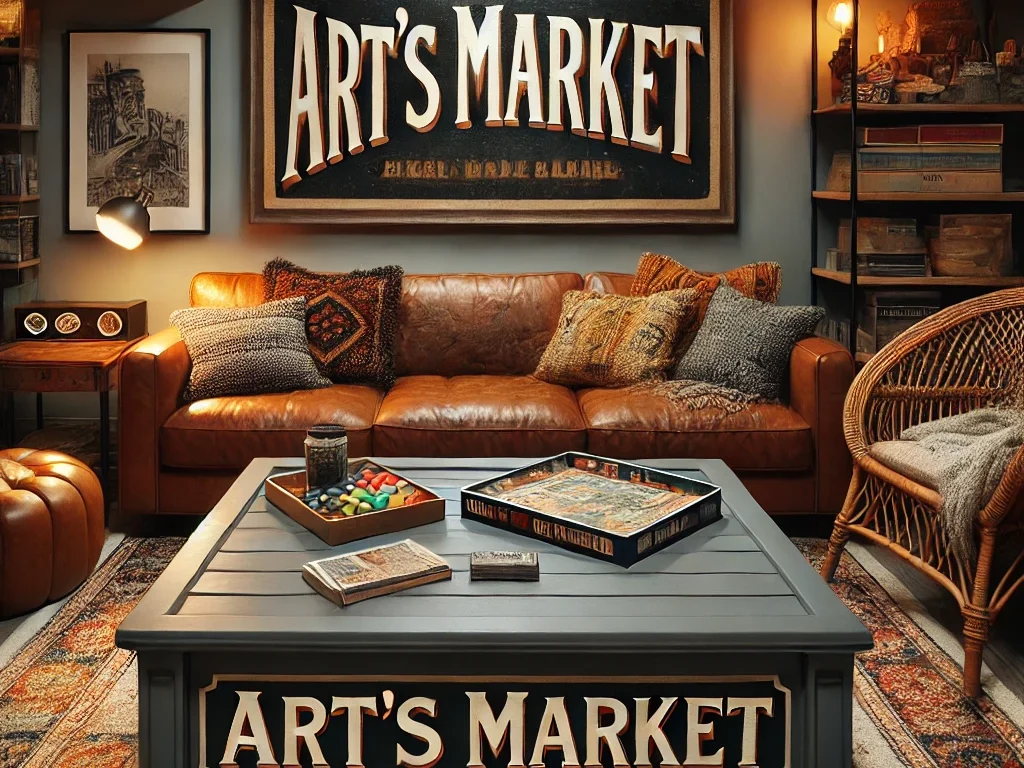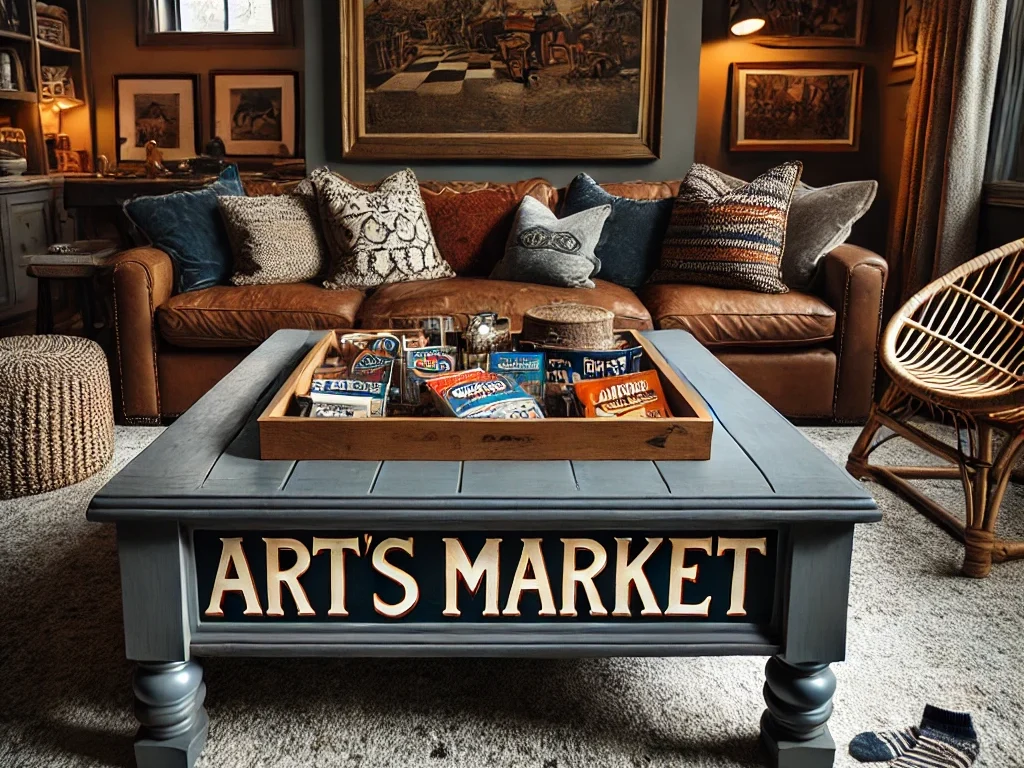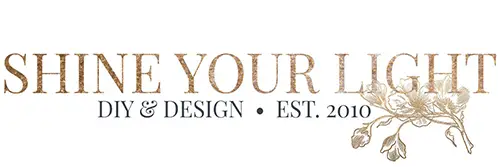I’ve always been a sentimental decorator at heart—there’s no denying it. In the past, I filled our home with items that occupied the space but didn’t necessarily reflect who we are or where we’ve been. Over time, I realized that I don’t want my home to simply house objects. I want it to tell a story, our story. I want it to be filled with pieces that are meaningful, beautiful, or thought-provoking. Whether they remind us of places we’ve traveled or cherished loved ones, these items should connect us to the people and memories that shape our lives.

One of those cherished memories revolves around Uncle Arthur, or as my kids affectionately call him, The Legend.
There’s an old family photo that captures Mark’s mom, his dad, and Uncle Arthur holding little Mark on his first birthday. (Can we just take a moment to appreciate how adorable Mark’s chubby little legs were?)
Uncle Arthur, now 95 years old, is Mark’s grand-uncle and the brother of Mark’s grandmother. Though he and his wife, Aunt Nellie, didn’t have children of their own, they became like a second set of grandparents to Mark’s family. Their home was the heart of many fond memories—road trips with the nieces and nephews, lively Sunday dinners, and the sharing of countless family stories.
If I were to sum up Mark’s family in one word, it would be laughter, and Uncle Arthur is its cornerstone. He’s the kind of person who lights up a room with his humor. His gift for storytelling has everyone wiping away tears of laughter, cheeks aching from smiling so much. His tales—often hilariously exaggerated—are legendary. My kids and their cousins are endlessly entertained by his antics and his classic one-liners, like “You’re a pretty fart smeller—I mean, pretty smart fella.” Even though they’ve heard it all before, they still burst into laughter every single time. When I recently told Uncle Arthur how funny he was (shouting into his “good” ear), he replied, “Oh honey, I just love to make people laugh!”
In their early thirties, Uncle Arthur and Aunt Nellie opened a grocery and meat market in Medford, Massachusetts, called Art’s Market. It became a cornerstone of their community and a part of family lore. My parents-in-law, who lived just down the street, would often walk to the market. Babies were weighed on the store’s scale, kids enjoyed penny candy, and older ones would help Uncle Arthur with small tasks. To this day, Art’s Market is woven into the family’s fabric. Mark and his brother even answer the phone with “Art’s Market!” whenever they see each other’s name on the caller ID.
I’ve always thought it would be wonderful to have a sign for Art’s Market displayed in our home as a tribute to its legacy. Unfortunately, I haven’t been able to track down a photo of the original sign or confirm the exact year Uncle Arthur opened the store, but I believe it was around 1949. So, I took some creative liberties and designed a sign inspired by what I imagined a mid-20th-century market sign might look like. I included elements that not only evoke the spirit of the era but also tell a piece of our family history. My hope is that this sign will give my kids a tangible connection to their roots and the story of Uncle Arthur’s life.
The perfect opportunity to bring this idea to life came when I found a sturdy, very brown coffee table at the Salvation Army last spring. It was solidly built but sat in our garage for months as I contemplated how to transform it. That table, much like Uncle Arthur’s stories, was about to take on a new life.
Finally, inspiration struck—it was clear this table was meant to bring Art’s Market into our home!

I envisioned it as a centerpiece for our basement, a room already bursting with activity thanks to my sweet little “homewreckers.” However, with brown leather and rattan furniture already dominating the space, I knew adding another brown piece would be too much. On a whim, I employed what I jokingly call the Karate Kid method—wipe on, wipe off—using leftover white latex wall paint I had sitting in the garage. It wasn’t going into a high-profile area, so no need for a fancy Annie Sloan chalk paint investment here. Practicality won the day!
When the paint dried, the table felt a little too whitewashed, almost sterile. Again, acting on impulse (are you sensing a theme with my creative process?), I decided to paint the tabletop and the shelf beneath it in a light gray. The subtle contrast immediately brought the piece to life, giving it a bit more character and depth.
I’ve dabbled in creating signs over the years—destination signs, latitude and longitude signs, you name it—but this time I stumbled across a game-changing online tool for enlarging graphics. It’s called Block Posters, and it’s a lifesaver! This isn’t a sponsored plug; I just love sharing great finds. The site allows you to take any image, enlarge it across multiple pages, and print it at home. It’s simple, free, and opens up endless possibilities for large-scale art projects.
Here’s how it works: you upload an image, select the size you want (split across several sheets of paper), download the file, and print. That’s it! For example, their gallery features an enlarged black-and-white photo mounted as a dramatic art piece. It’s both stunning and budget-friendly. You can mount the sheets directly onto a wall or adhere them to inexpensive foam insulation boards for a polished look. Seriously, think of the creative potential!
Now, back to my Art’s Market table. I designed the graphic in Word, using WordArt to create a curved shape for the text. To save printer ink, I selected the “outline” option for the letters. Once I was happy with the design, I uploaded it to Block Posters and sized it to fit across six pages (three wide by two tall). Adjusting the scale to fit the table took a bit of trial and error, but the site made it incredibly easy. In just a few minutes, I had a perfectly proportioned design ready to go.
After printing the design, I cut out the individual words and arranged them on the table. Getting the placement just right took some fiddling, but once everything looked balanced, I moved on to the next step: transferring the text.
To do this, I colored the back of each paper with colored chalk, taped the words in place, and used a pencil to trace the letters onto the table’s surface. The chalk left a faint outline that served as my guide for the next stage: painting.
Using Sharpie paint pens, I carefully outlined the letters and filled them in. For the larger text, I applied multiple coats, allowing each layer to dry before adding the next. When the lettering was complete, it looked bold and vibrant, but I wanted a slightly weathered, vintage feel. So, I grabbed a piece of sandpaper and lightly distressed the edges of the text to give it character and a touch of authenticity.
At this point, the table was almost ready. A group of very kind 15-year-old boys (my son’s friends) carried it down to the basement for me. However, as soon as I saw it in the room, I realized the light gray wasn’t quite right. It felt too washed out against the richer tones of my IKEA velvet pillows and the gray ikat fabric in the space.
Because I’m a little crazy—and because my family was engrossed in back-to-back football games, leaving me with no interest in sitting through another—I decided to repaint the table. Yes, I painted the top again. This time, I opted for a darker gray, which paired beautifully with the rest of the decor. Although I kicked myself for not thinking of this sooner, the end result was worth the extra effort.
Once the paint dried (for the second time), I sealed the entire table with a coat of wipe-on polyurethane for durability. This finishing touch ensured it could withstand the chaos of a basement used by active kids.
Today, the table is a functional and beloved piece in our home. Sure, it’s often covered in board games, video game controllers, stray socks, and granola bar wrappers—but that’s exactly what makes it perfect. It’s a daily reminder of the joy and laughter Uncle Arthur brought to our family and the legacy of Art’s Market.
As the saying goes:
“Laughter—it may not add years to your life, but it will add life to your years.”
Decorating with meaningful pieces is what truly transforms a house into a home, wouldn’t you agree?

